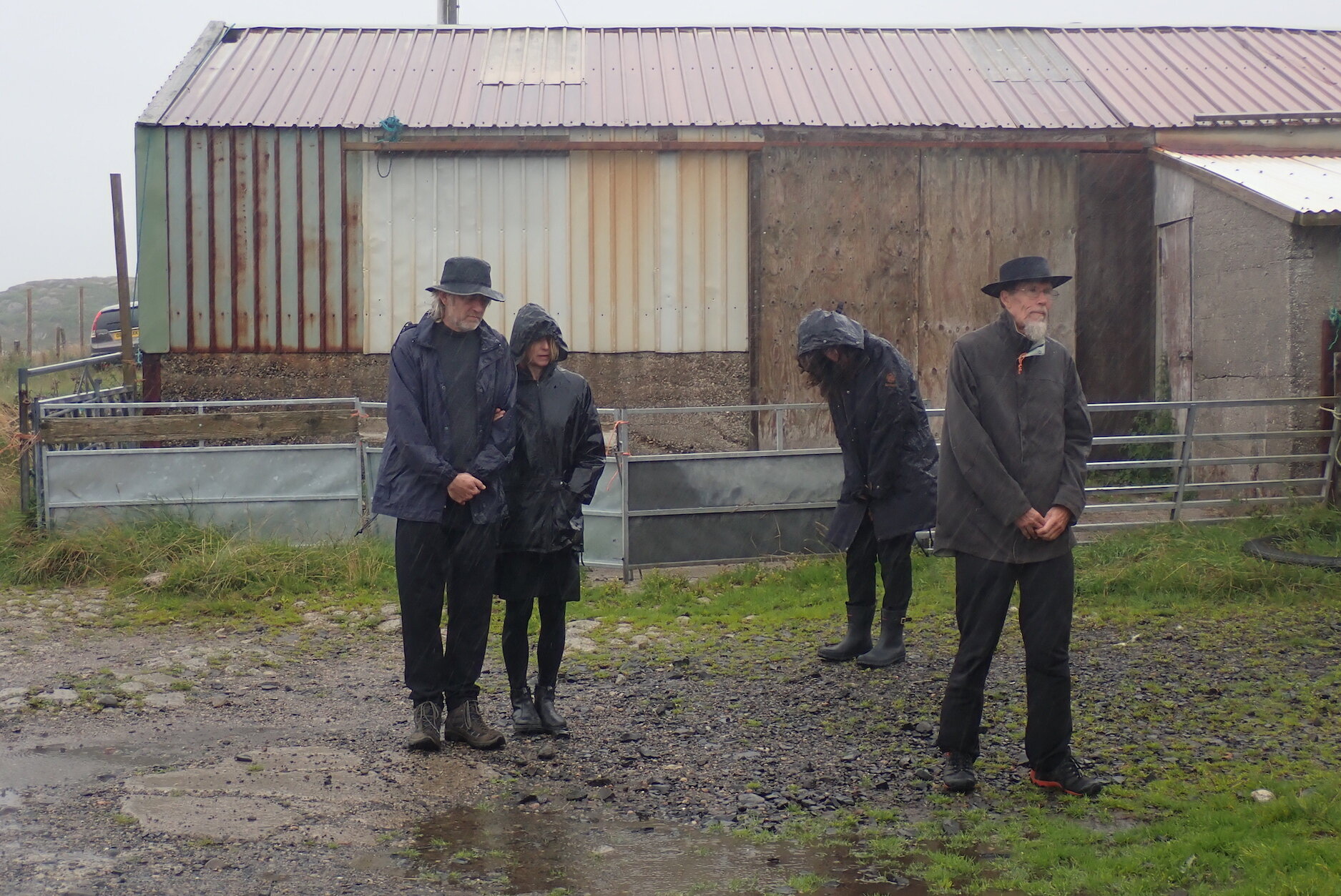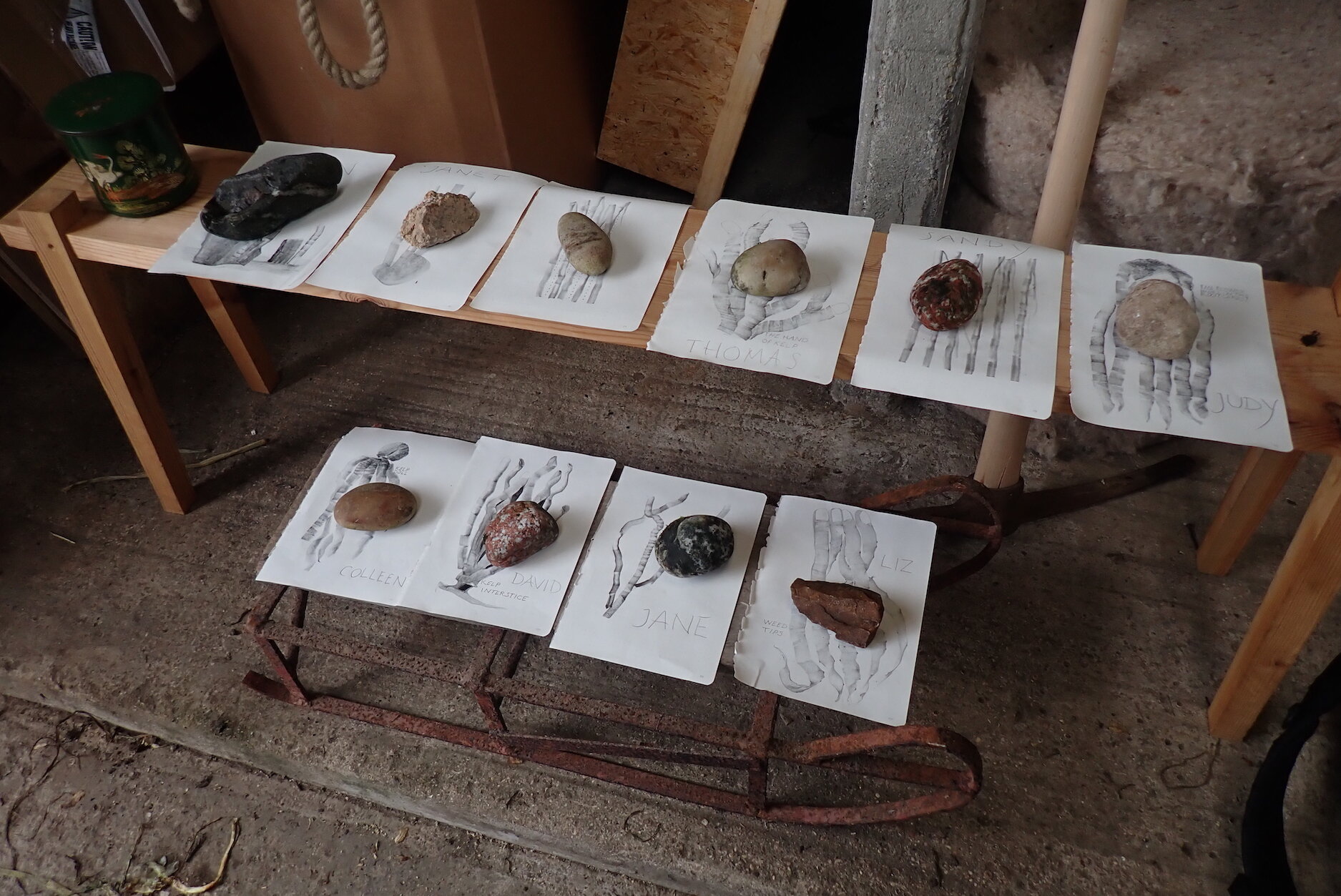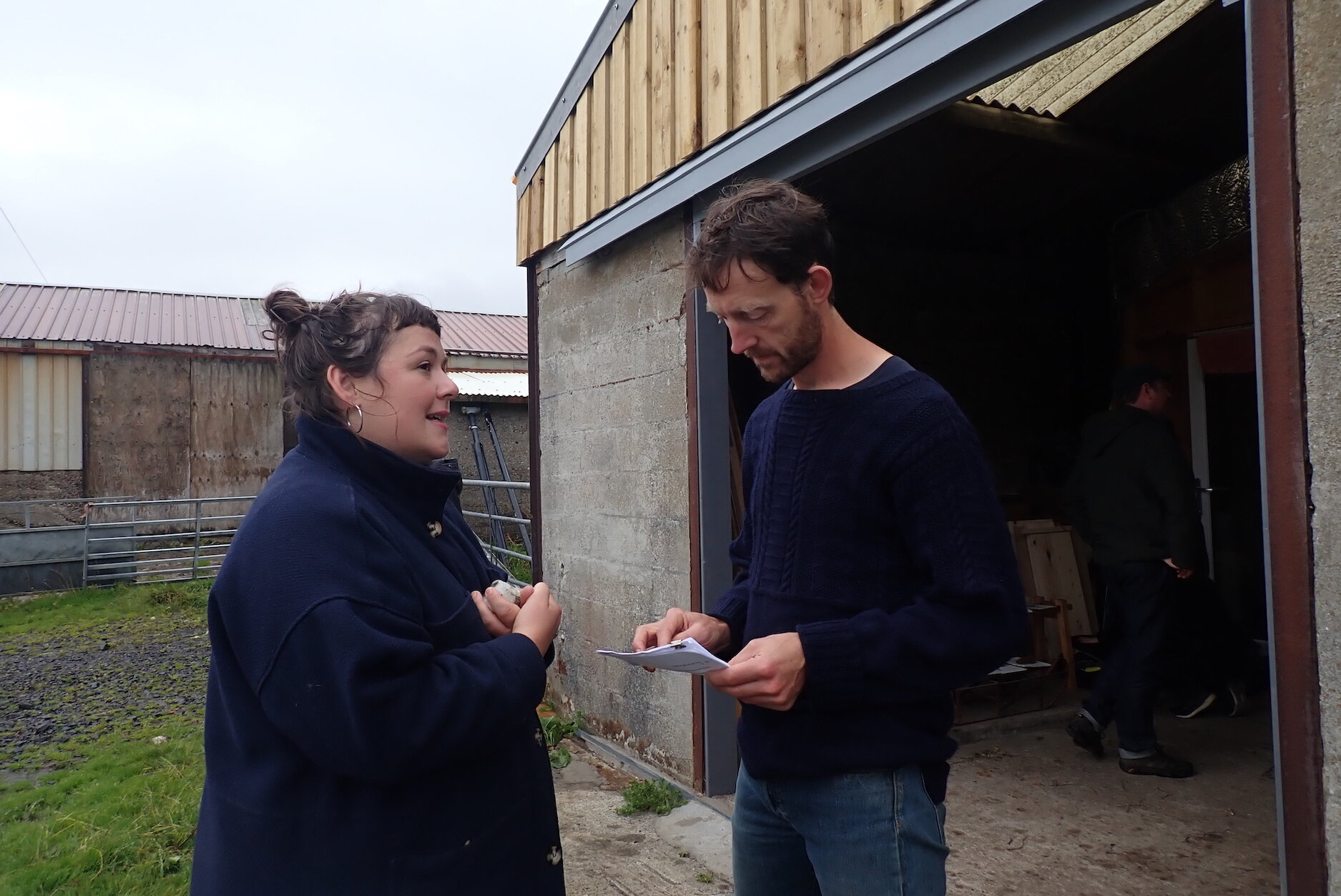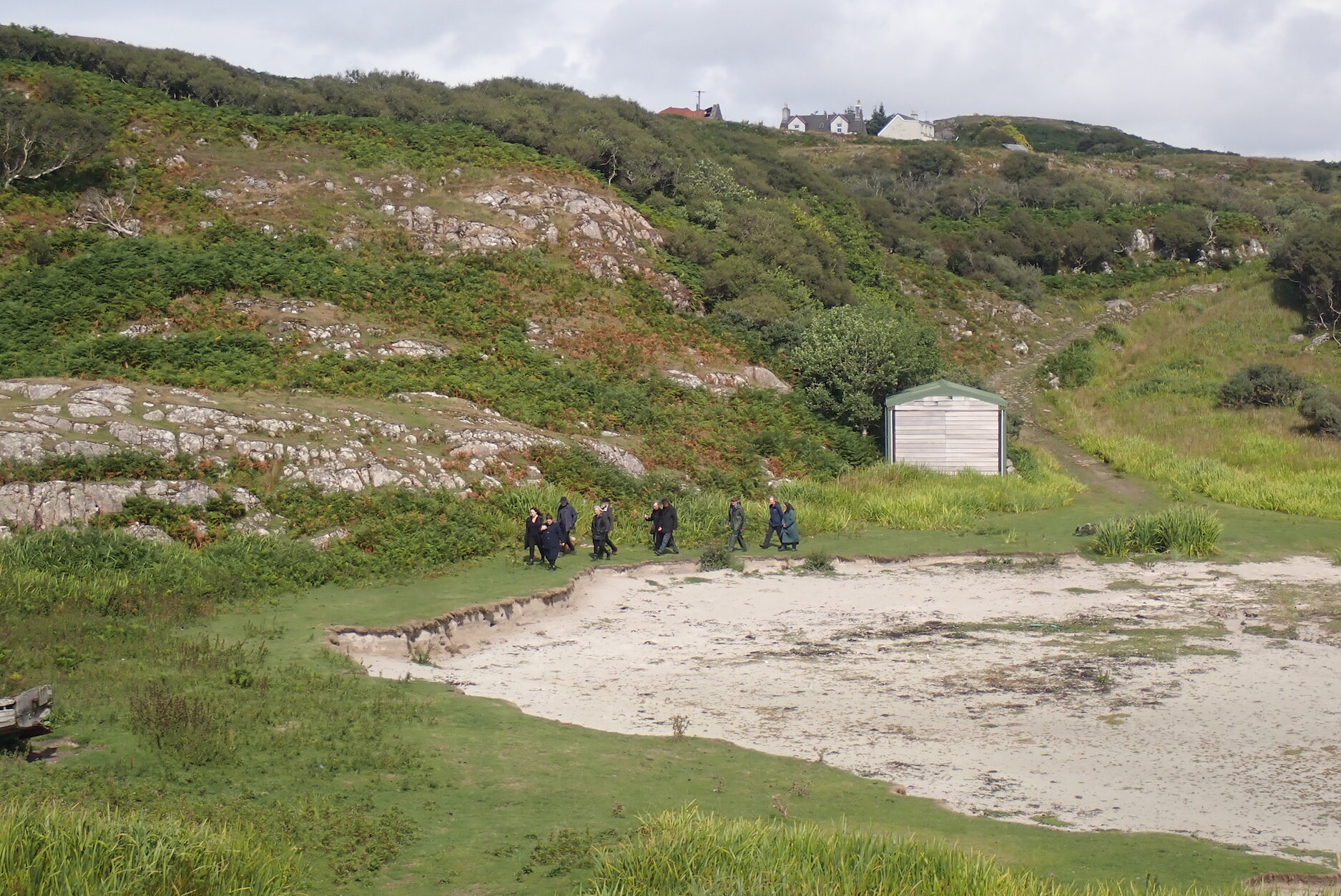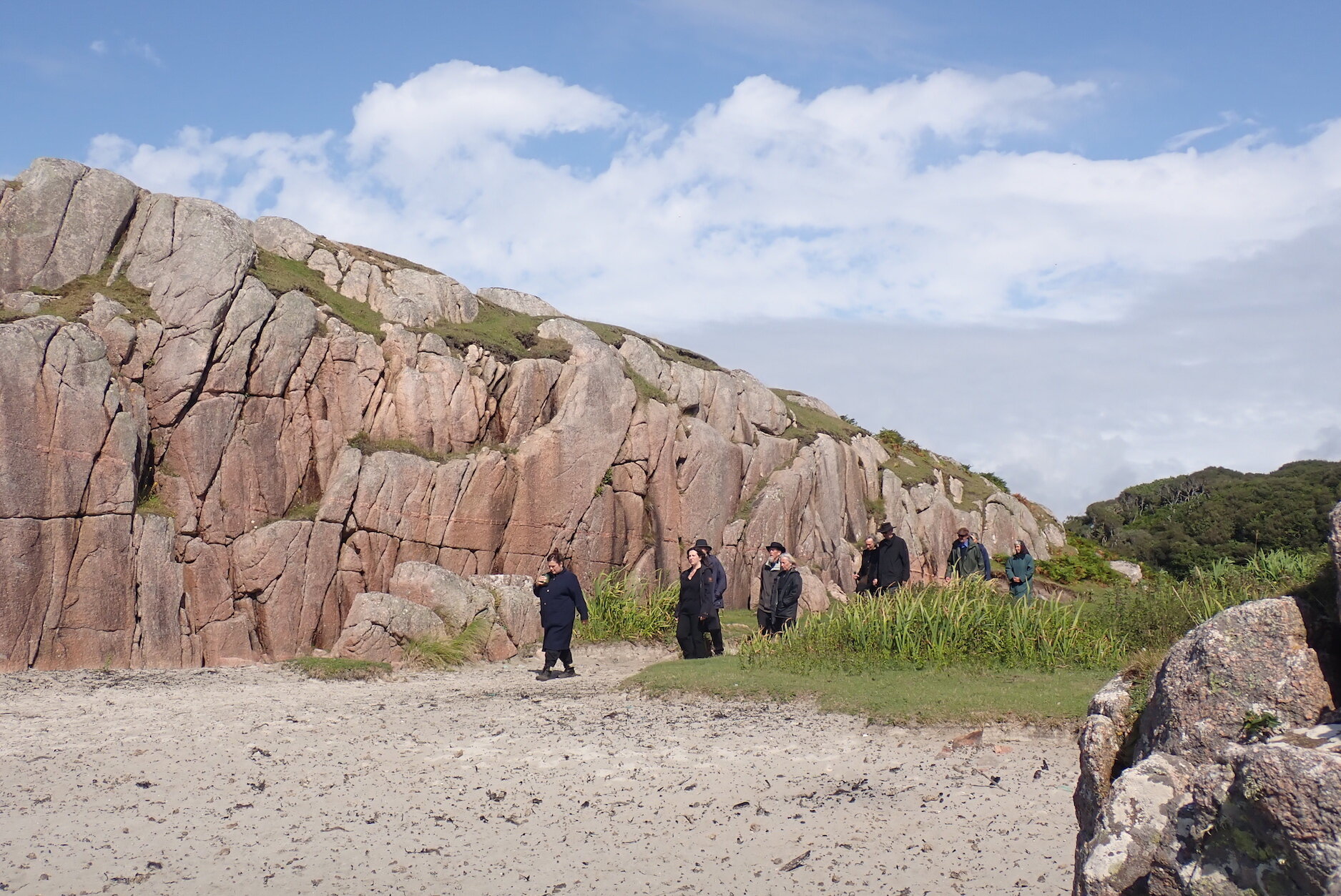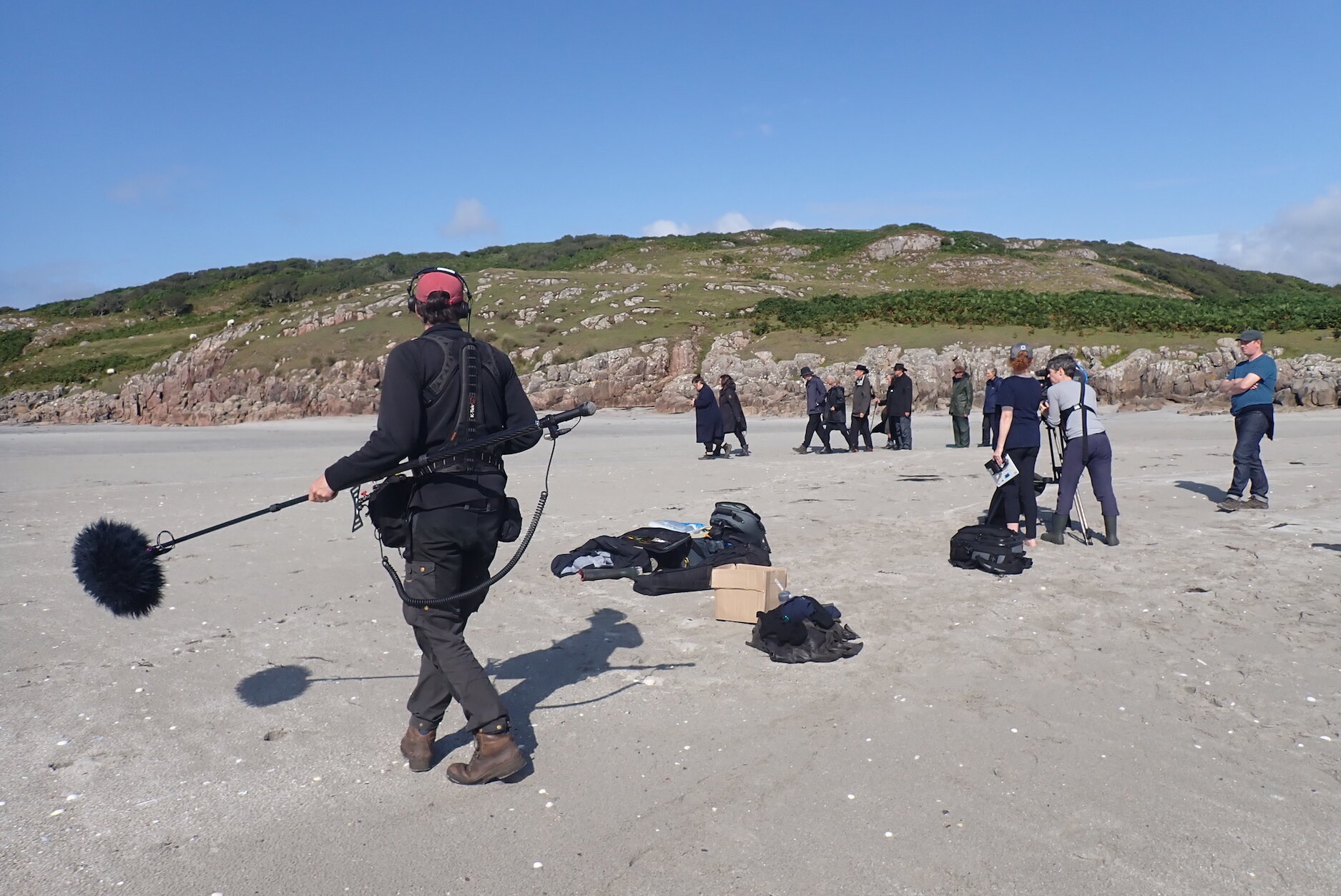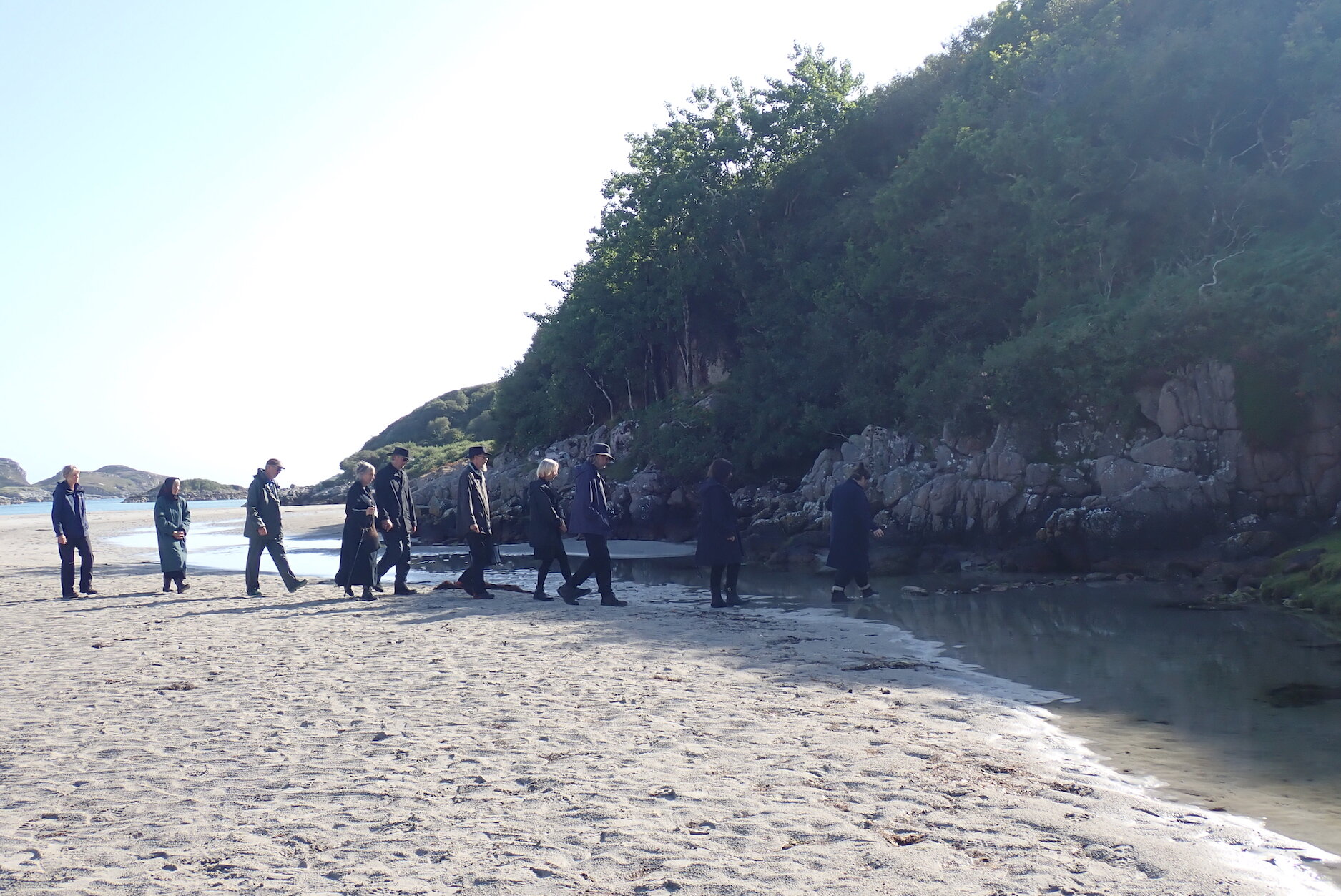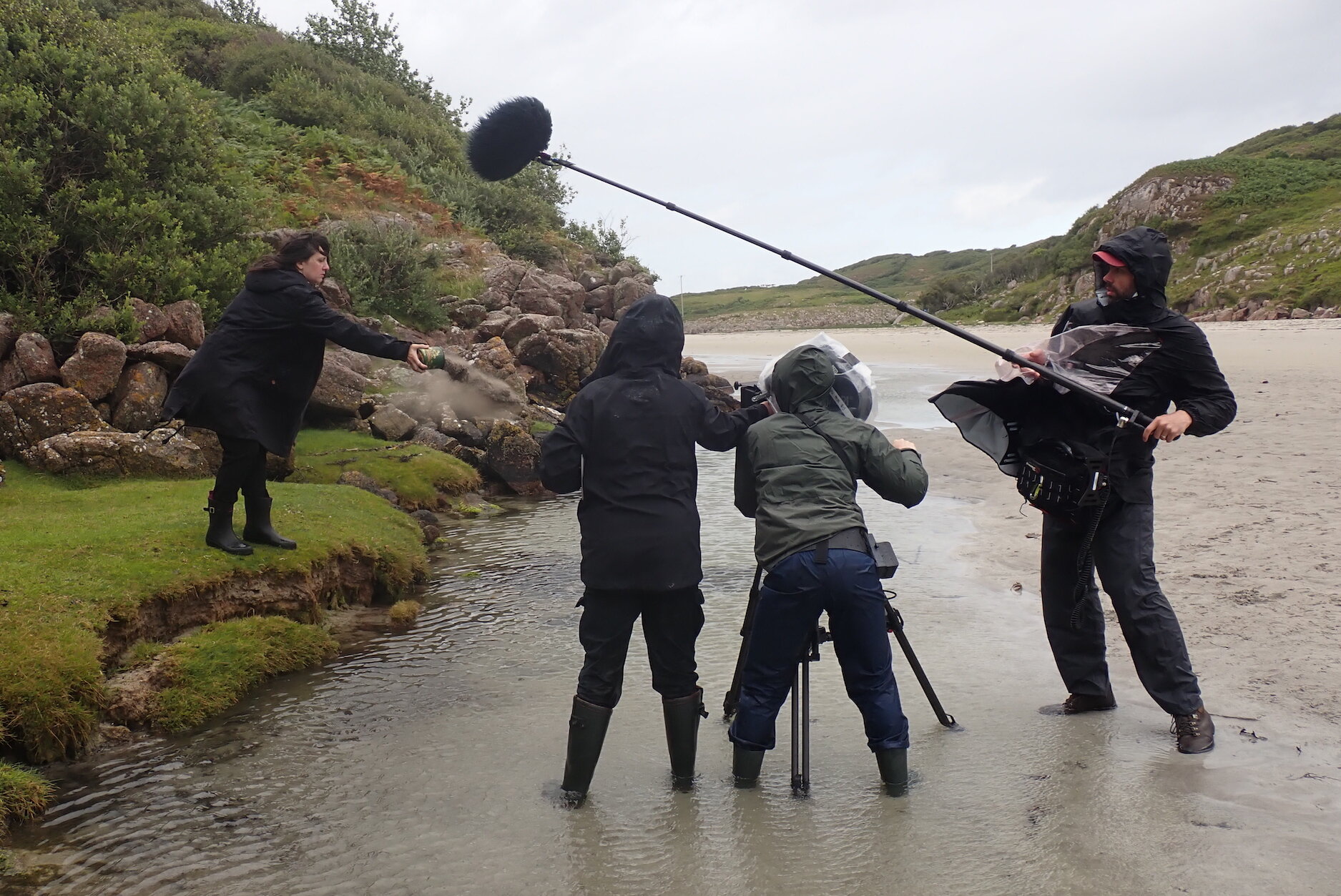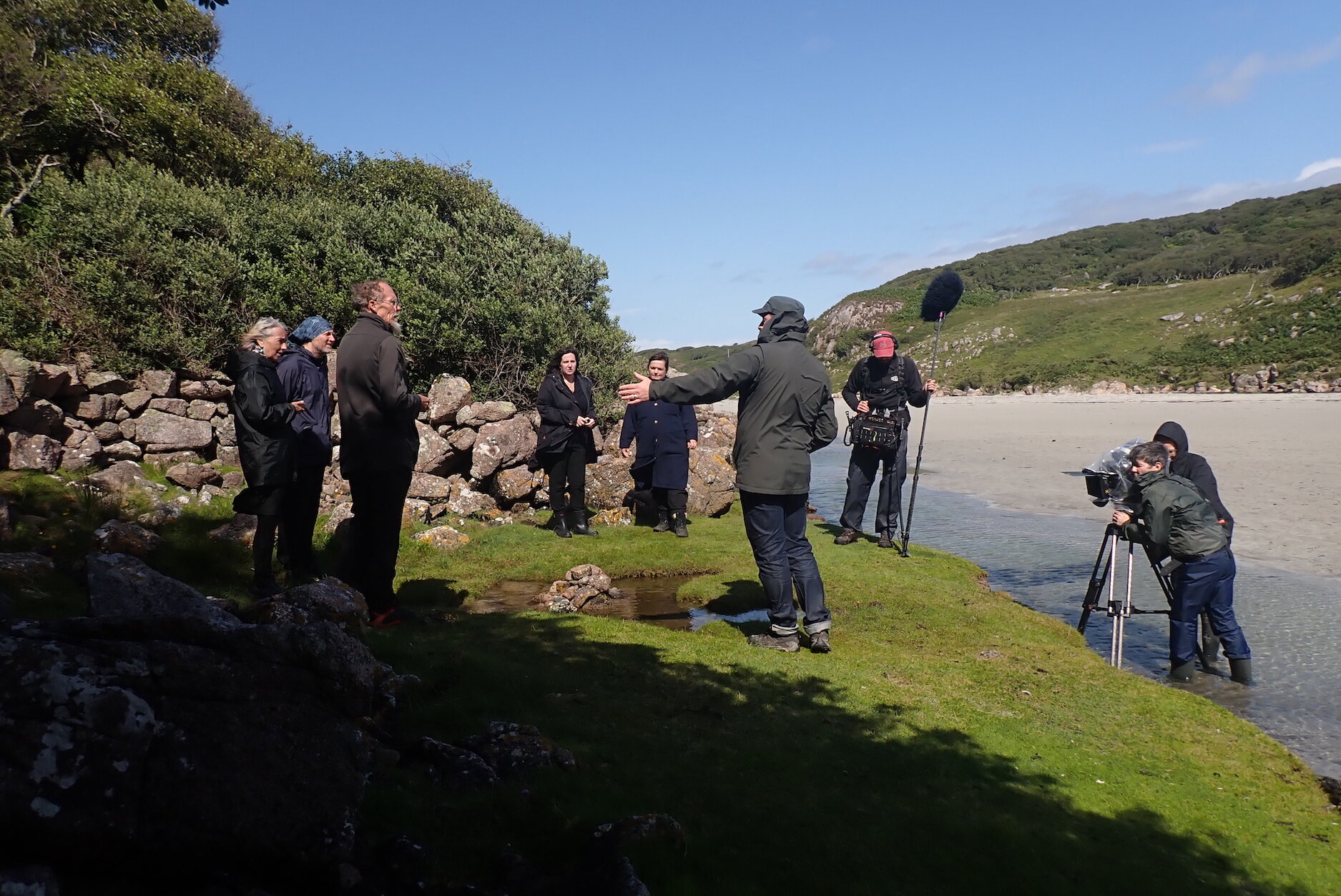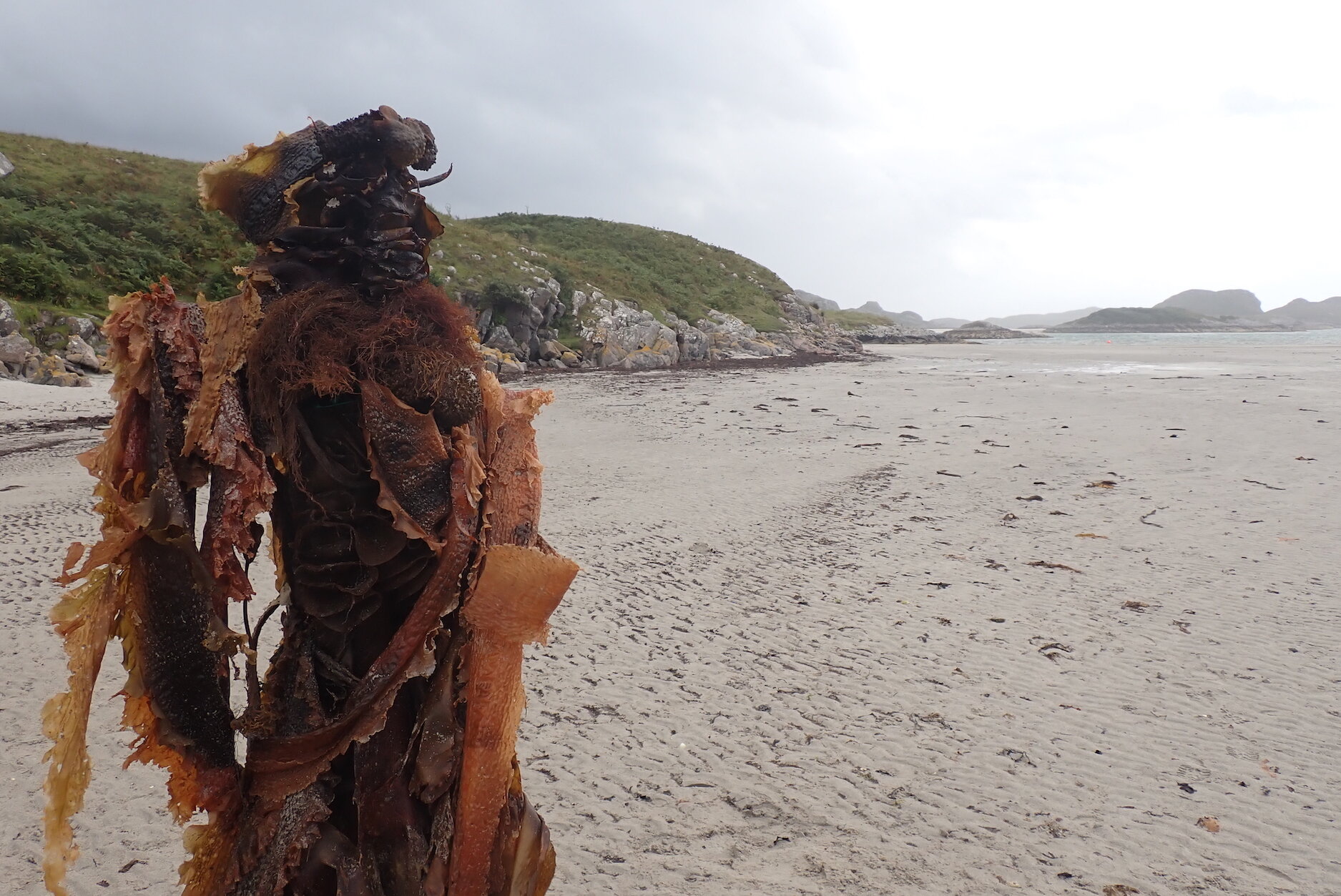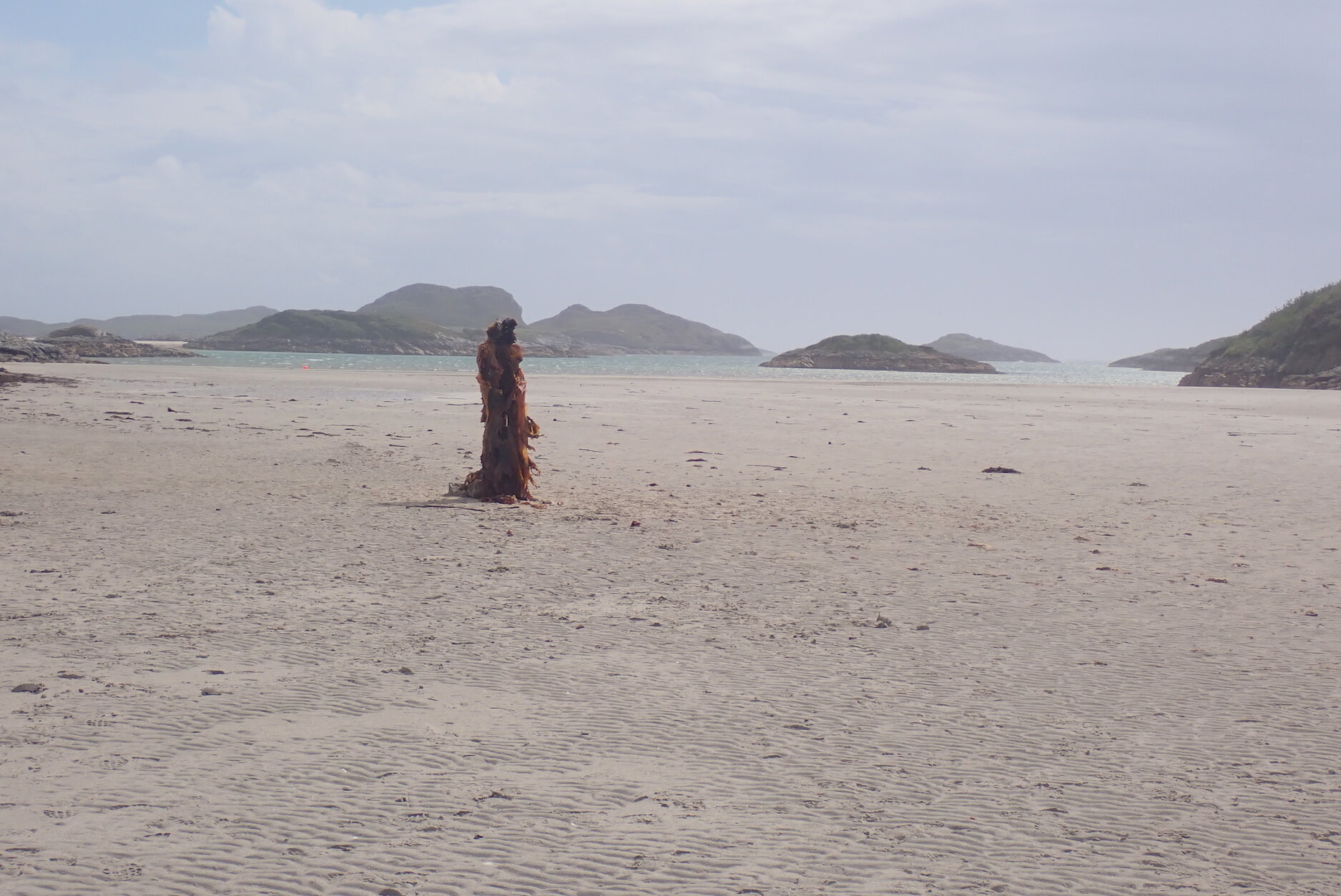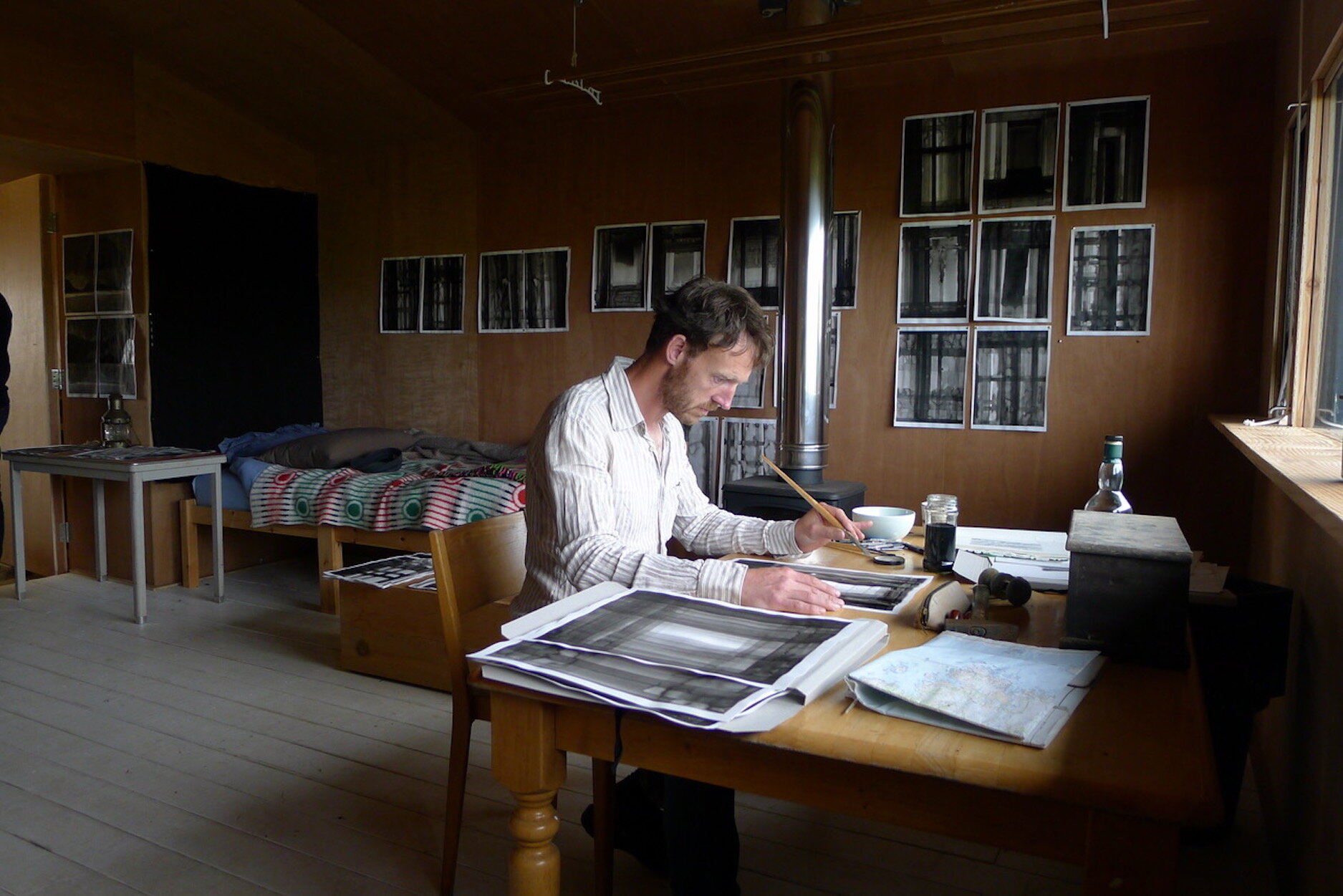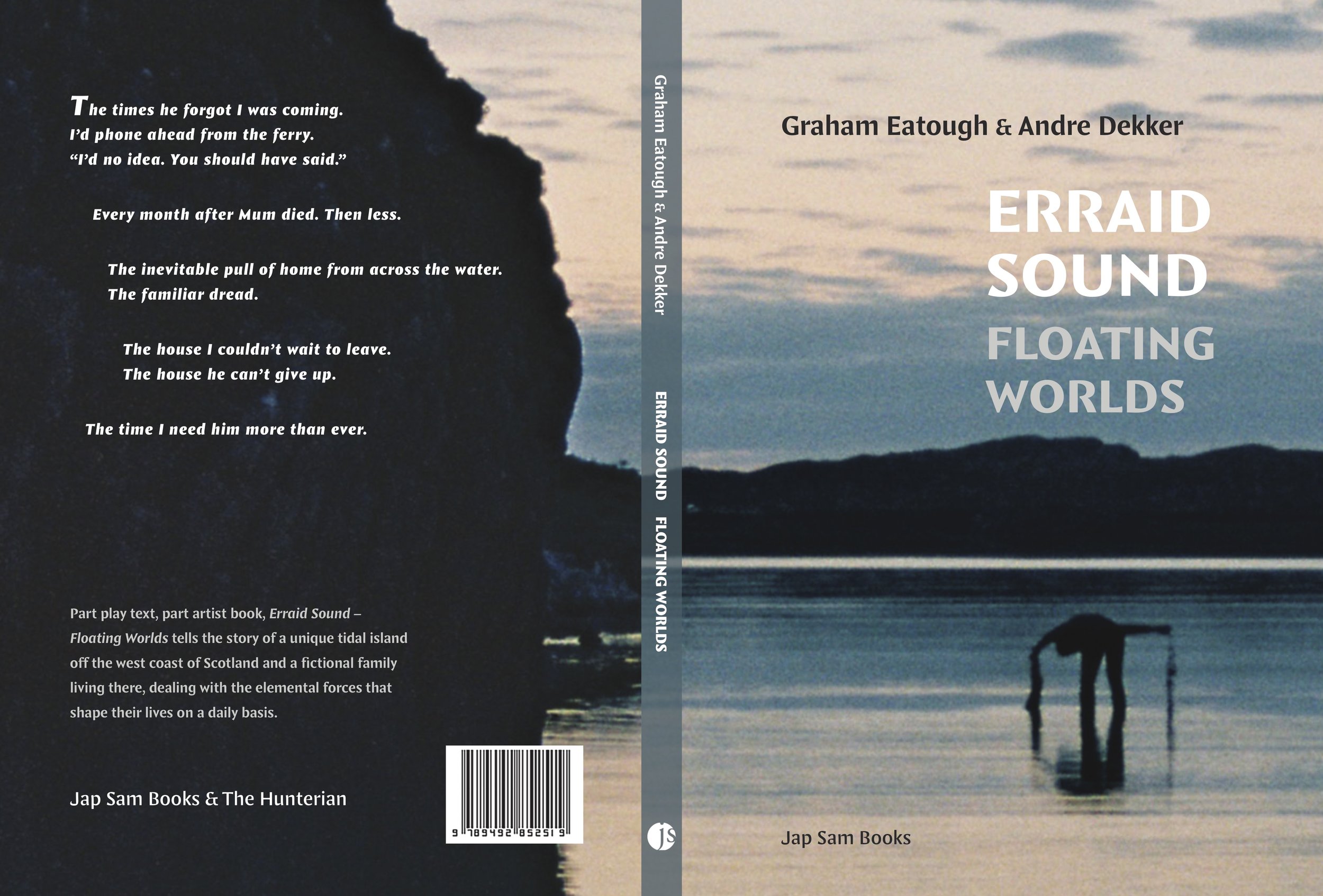Floating Worlds
Floating Worlds is a collaboration between Scottish theatre director Graham Eatough and Dutch visual artist Andre Dekker in association with KNOCKvologan. The multimedia project involves a 35mm film and a publication.
The film Floating Worlds forms the second act of a story set on Erraid Sound – the strip of beach that separates the tidal island of Erraid from the west coast of Mull. Eileen and Liz, who recently lost their father, meet again to scatter his ashes at the shrine of their mother. A procession of the two sisters and some relatives moves across the sand between the two islands at low tide. In the distance a wading ghost-like figure appears to watch over Eileen and Liz as they say goodbye in a ritual of song, fire, ash, and water.
Made with participants from the local community, the film connects the first half of the story to the particular place and time of the Ross of Mull on a present-summer day, whilst allowing it to resonate with a landscape that stretches back across the millennia. Rituals of death intimately bound up with the land and sea are enacted as they have been throughout human history in the spectacular natural setting of the ocean, cliffs and beach formed over time.
The project offers an artistic response to some of today’s most pressing issues around our relationship with landscape and climate, and our ageing and sometimes isolated population.
Designed to be realised within Covid-19 restrictions, Floating Worlds exists of both analogue and digital technologies to tell its story and connect with its audience, using filmed performance and a publication to enable the work to be presented outside conventional theatre space.
Graham Eatough & Andre Dekker ERRAID SOUND: FLOATING WORLDS, 2021, Jap Sam Books, ISBN 978-94-92852-51-9
Influences
A key inspiration for this project comes from both artists’ long-standing interest in Japanese garden architecture and the theatrical stagings of the intimate relationships between people and nature seen in Noh theatre. From its Buddhist and Shinto origins as a ceremonial outdoor theatre, through to the stories about individuals coming to terms with the power and mystery of the natural world, Noh gives audiences a non-linear experience of time and place. Floating Worlds attempts to draw on these ideas to create a contemporary work that foregrounds the power of drama and performance to transfigure and transform human experience in order to express something profound about our relationship with the world around us. The story refers to the Noh play Sumidagawa about a grieving mother in search of her lost son, who navigates her way across an inhospitable river to unsuspectingly discover his shrine. For the film, the project draws on Noh’s use of masks, music, dance and ceremony, as well as referencing the first Noh performances presented on dried river beds. The tidal flat of the Sound of Erraid is a natural phenomenon that unmistakeably resembles the Japanese tidal flat where the very first Noh theatre stage was build. The twisted oaks and birches barely surviving on the rocks are quite similar to Japanese trees, both naturally shaped in landscapes and clipped in gardens. The miniature beaches and grassy deltas of the Narrows are perfectly maintained, just like the meditative Japanese gardens, however not by human hand but the precision of the tides and the grazing of sheep.
Title
The title Floating Worlds refers to a period in Japanese cultural history associated with theatricality, hedonism and transgression. Although originally an urban phenomena, the term is associated with some of the most iconic artistic expressions of our relationship with the natural world in the form of woodblock prints, as well as a high point in Japanese theatrical forms. More broadly it resonates with ideas of the ephemeral and detachment from the everyday.
Participants
Concept, play, script, drawings, filmset: Graham Eatough & Andre Dekker
Director of Photography: Margaret Salmon
Assistant Camera: Kirstin McMahon
Sound: Pete Smith
Editor: Duncan Marquiss
Performers: Jude Williams & Louise Ludgate, Jane Brunton, Sandy Brunton, Rutger Emmelkamp, David Faithfull, Judy Gibson, Alan Schofield, Janet Schofield, Mark Scholefield, Colleen Thompson and Miek Zwamborn.
Screening
Floating Worlds will be presented at Mull Theatre An Tobar in Tobermory and in a launch / screening event in Glasgow during the COP26 climate summit. This event will be part of Dislocations, an international group exhibition on art and landscape, including works by acclaimed modern and contemporary artists Paul Nash, Helen Frankenthaler, Ian Hamilton Finlay, Andy Goldsworthy, Charlotte Prodger (Turner Prize winner 2018), Margaret Salmon and Jessica Warboys. Dislocations will take place in the Hunterian Art Gallery in Glasgow, 8.10.2021-5.12.21 and is curated by Dr. Dominic Paterson, Senior Lecturer in History of Art / Curator of Contemporary Art, University of Glasgow. Floating Worlds will also be represented within the exhibition through the display of the artist’s drawings and geological materials from The Hunterian’s Collection that come from the same Mull landscape in which it is set.

